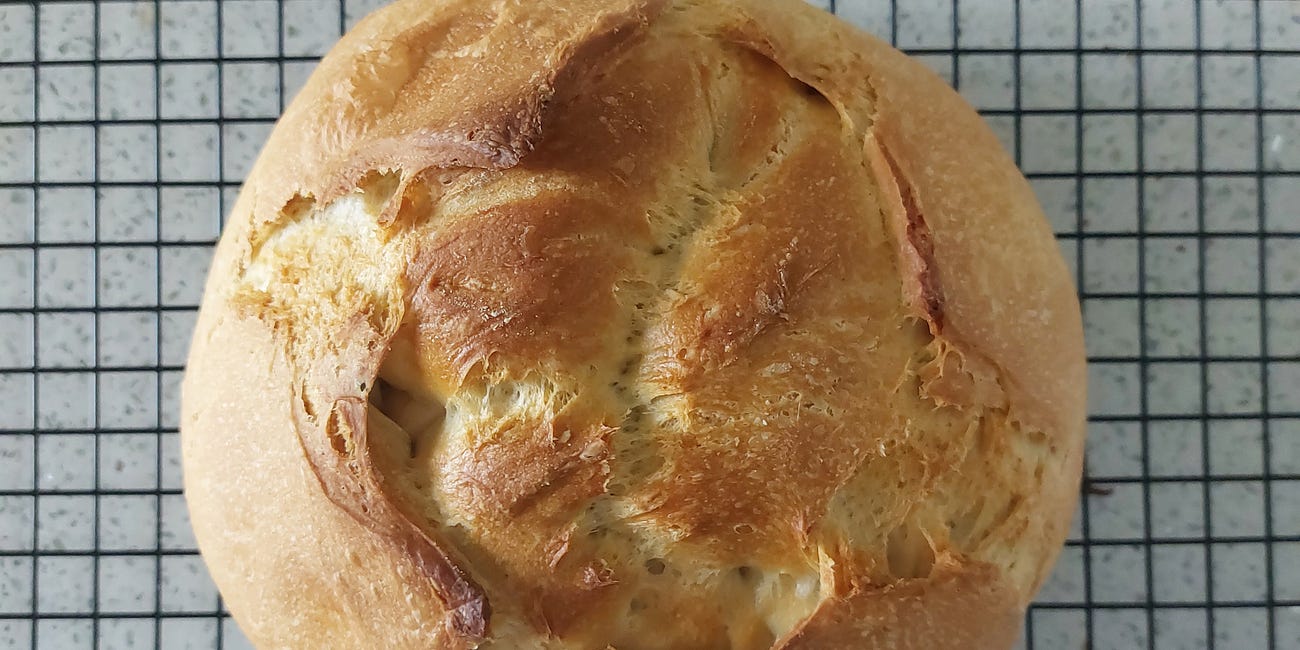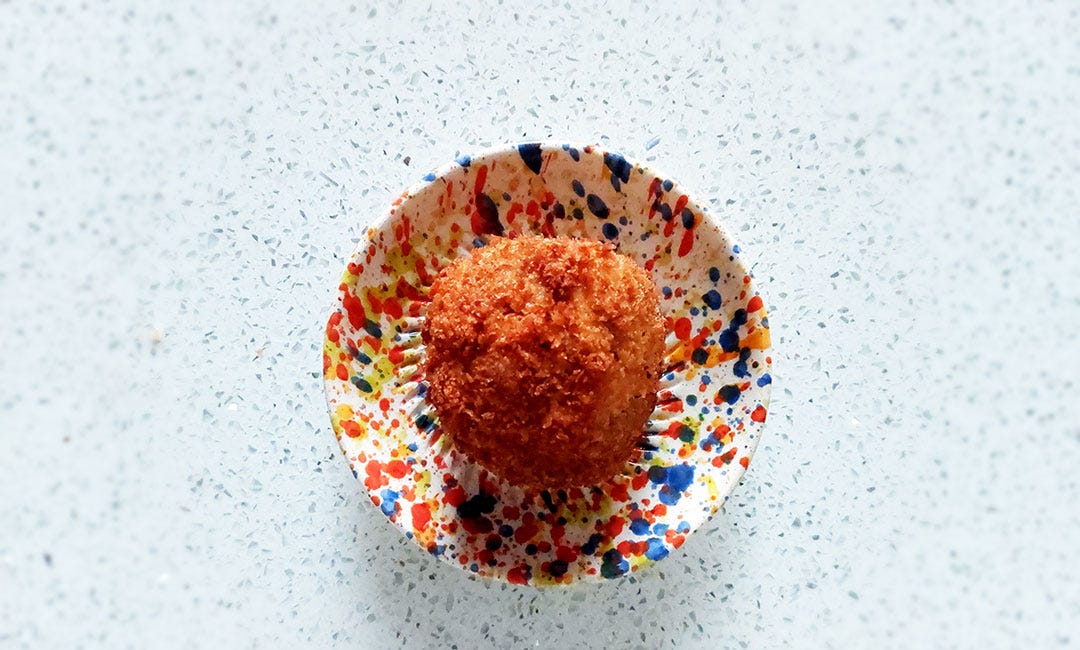It’s been another busy month of travel for me. One of my trips was to Oviedo, the capital city of the Asturias region of northern Spain. This year it is the country’s designated capital of gastronomy, and I visited to find out more about why this is such a haven for food fans. There are lots of similarities between Asturias and Wales. They’ve both been principalities, they have their own languages, are mountainous and green with a history of coal mining, sheep farming and steel production. The food reflects the landscape and climate, with hearty stews such as fabada, slow-cooked meats such as carne gobernada, cheese and dairy products – not unlike our own Welsh traditions.
On the last night of my trip, I had the great pleasure to have dinner with two members of the Club de Guisanderas. This esteemed group of female cooks was set up in 1997 by a collective of women who wanted to preserve the traditional Asturian recipes and food customs – those that had been passed down orally from grandmothers etc. The word guisandera comes from the word guiso meaning stew. A guisandera was a woman who prepared food for the village for special occasions, often travelling to neighbouring villages to cook there, too. She would also dispense her gastro-medicinal knowledge, prescribing foods or herbal remedies for common complaints. The guisandera was sort of part healer, part cook, and part village grandmother. And, most importantly, they kept it all in their heads. It was never written down, just passed down – by word of mouth, sleight of hand, and a knowing eye.
My dinner companions were Amada – a retired restaurant owner, cook and current president of the club, and Mary, whose restaurant we were meeting and dining in. After we got past the slightly mystified suspiciousness of why a random British journalist was so interested in their club, the conversation flowed, along with Asturian cider and more-than-ample helpings of each of the dishes chosen by Mary. “Give the rest to him,” I heard Amada say nodding in my direction, “He’s young and thin”. Oh no, another motherly figure trying to fatten me up, this time with delectable squid cooked in its ink with rice. Foolishly, I thought that was the final dish of several I’d already been served up – Amada and Mary’s eyes tracking every forkful to my mouth and delighting in my expressions of satisfaction and willingness to not just taste but devour whatever was heaped onto the plate in front of me.
They tell me that the club and its members have won just about every award that there is to win in their field, but they say, the one that means the most was given to them by a group of four-year-old school children. They are no stranger to awards themselves as they dish out (pun intended) the much-coveted Golden Guisandera awards each year to those who have supported the club and its ethos, this has ranged from journalists to politicians.
To date, the guisanderas have written three books filled with recipes and other helpful advice and guidance. Mary kindly gifted me a copy of their 25th anniversary cookbook, which is filled with gorgeous traditional recipes – some given modern twists. Amada says, “We're not about being stuck in the past, we're always open to new ideas.”
All the chatter made me wonder how many wonderful recipes have been lost to time around the world and back home in Wales. We’re fortunate that S Minwel Tibbott did a lot of work for us in Wales. She was an assistant keeper in the Department of Oral Traditions and Dialects at St Fagans National Museum of History, and she travelled around Wales back in the 60s and 70s collecting recipes. They were published in a book called Welsh Fare in 1974. In the introduction, it says, “A recipe may well be compared with a folk song or folk tale; all three are transferred orally from person to person, from generation to generation, and their preservation depends entirely on the strength or weakness of the human memory. Slight modifications are inevitable over a period of years. A slip of the memory or the wish to improvise may well account for the minor variations discernible when more than one recipe is given for a particular dish. Local customs attached to many of the dishes are evident too.”
We have a long tradition of oral history and storytelling in Wales. The bards and folk music and the most famous Welsh stories, The Mabinogion, are only there now because someone had the sense to record these classic spoken tales in written form.
I popped by St Fagans last week to see their latest addition, The Vulcan. Formally of Adamstown in Cardiff, the iconic pub was taken down brick by brick, glazed tile by glazed tile in 2012 and has been lovingly rebuilt in situ at St Fagans. The interior is styled in 1915 decor, the year the famous tiles were added to the exterior facade. You can have a pint of Vulcan brewed especially for the pub by the Glamorgan Brewing Company, plus wines and snacks such as picked eggs. I love how hands-on St Fagans is anyway but to be able to go in and experience the pub in the way it's supposed to be adds an extra element. Let's hope we soon have a classic Welsh Italian bracchi cafe there too serving frothy coffee and gelato in leatherette booths.
I’ll leave you with a final thought: if you have a recipe that's in your head, please write it down, tell someone about it, tell me about it. Don't let them disappear!
The Recipe
Ann Davies’s fruit cake
This is one of those old Welsh recipes that’s been recorded and handed down. The Ann Davies in question seems to have been something of a minor celebrity in her hometown of Kidwelly thanks to her recipe for fruit cake. She would sell the cakes from her shop at six pence a round, and possibly also sell the recipe – both common occurrences back in the day to make extra cash. I’ve adjusted the original recipe to make it metric and reduce the quantities as I’m guessing you’re not planning on selling it, but I’ve kept the ingredients and method the same. If you want to have a look at the original, you can find it in the Amgeddfa Cymru online archives.
Ingredients
350g plain flour
200g caster sugar
60g butter
100g lard
350g currants
½ tsp baking powder
½ tsp mixed spice
½ tsp ground nutmeg
Good pinch of salt
1 free-range egg
150ml milk
Method
Preheat the oven to Gas Mark 4/180°C/350°F, and grease and line a loaf tin with baking paper.
In a large mixing bowl, rub together the butter and lard with the flour and sugar. Then add all the other dry ingredients and mix.
Add the egg and slowly add the milk, mixing it all together to give a soft batter.
Tip the mixture into the tin and bake in the oven for about 1 hour and 30 minutes or a knife comes out clean when inserted.
The Playlist
To me, cooking and music go hand in hand, whether that’s singing at the top of your voice using a wooden spoon as a microphone while waiting for pasta to boil, or dancing around with the oven gloves on as the oven timer counts down. Here are this week’s ideas for your Welsh Kitchen playlist.
First up this issue we have a bit of an indulgent choice. Performed by Côr Y Boro | Borough Welsh Choir, In the Shadow of the Shard, tells the story of the chapel and family where the Borough choir – of which I am a member – rehearses and performs. I wrote the lyrics as a poem during lockdown in 2021, and the choir’s wonderful accompanist Ben Cook set it brilliantly to music. It had its premiere at Capel y Boro | Borough Welsh Chapel’s annual summer concert a few weeks ago. Secondly, we have a classic by Dolly Parton, who has a documentary soon to air exploring her Welsh ancestry on her mother’s side.
In the Shadow of the Shard by Côr Y Boro | Borough Welsh Choir
Coat of Many Colours by Dolly Parton
Ross recommends
Sheriff’s Biltong
I’m a big fan of charcuterie, and I’ve featured Cwm Farm’s nduja before in a recipe with chicken, leeks and rice. This beautiful biltong is more of a snack than an ingredient (although watch this space as I always like to experiment), and if ideal with a little glass of something early evening, especially now with the balmy nights. It’s made in collaboration with rugby player Ken Owens whose nickname is the sheriff. It comes in different flavours but I rather like the black pepper one.










Wonderful ❤️